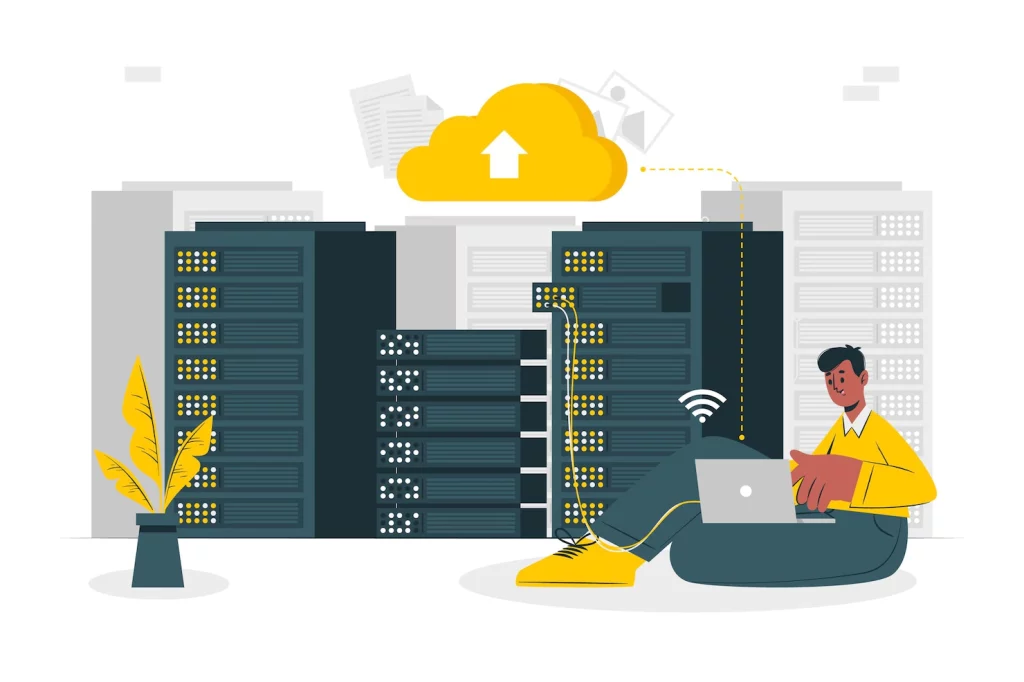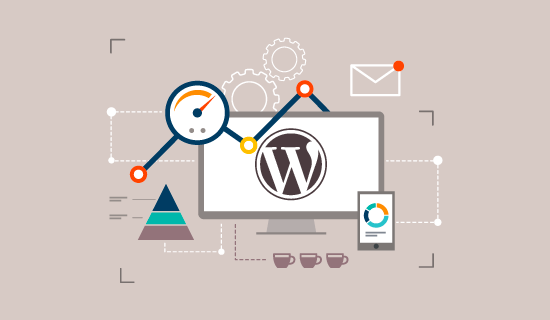I know the feeling. You just completed a website build using Divi, the amazing WordPress theme and page builder tool, but now you’re seeing slow load speeds that are getting in your way.
Don’t worry! Having a fast-loading page is essential for any website’s success, so I’m here to help. In this blog post, I’m going to share my top 10 highly effective tips on assessing and improving your site’s speed when using Divi—allowing you to get back up and running quickly with a good user experience. Let’s dive right in!
Is Your Divi Site Running Slow? Find Out Why!
As a Divi user myself, I’ve grappled with these very questions: “Why is my Divi site so slow? Does Divi slow down the site?” I can provide some insight here. While Divi is a wonderful and flexible WordPress theme, it can indeed slow down your site if not properly optimized.
This is mainly because Divi, with its advanced visuals and customizability, can generate a lot of code, which can in turn slow down your site.
But don’t worry, there are several ways to optimize your Divi site for speed, such as enabling Divi’s built-in static CSS file generation option, reducing image sizes, and using a good caching plugin.
By following these steps, you can ensure that your Divi site runs smoothly and quickly. That said, don’t forget to regularly test the speed of your website with tools like GTmetrix and Pingdom, so you can track performance over time!
1. Boost Your Website’s Performance with Divi Performance Settings

One of the most important aspects of a website is its loading speed. Visitors expect their pages to load quickly and without errors or lag.
If your Divi-powered website isn’t up to these standards, it can hurt your search engine rankings and even drive potential customers away. To help make sure your site runs smoothly and efficiently, you can utilize Divi’s Performance Settings.
These settings will let you optimize your site for speed and performance, allowing visitors to quickly access content without having to wait too long.
You can enable Divi’s minification feature to reduce the size of files on your server, as well as turn off query strings from static resources which can improve overall loading times.
Additionally, turning on “Async JavaScript Loading” and “Defer JavaScript Loading” will help keep your website up to date with the latest standards.
Finally, the Divi Performance Settings allow for you to set up caching so that page elements like images don’t need to be loaded from the server each time a visitor comes to your site. This helps speed up your loading times significantly, making sure visitors get the best experience.
- Enhance Website Performance with Dynamic Module Framework and Icons.
- Increase your website’s speed and efficiency with Dynamic CSS and Critical CSS settings.
- Choose the “above-the-fold threshold” with the Critical Threshold Height parameter to balance load times.
- Control when Javascript libraries load and remove native WordPress emojis with Dynamic Javascript options.
- Improve Website Load with Defer Gutenberg Block CSS and jQuery Migrate Repositioning.
- Optimize Google Fonts Loading and Support for Legacy Browsers for faster load times and improved performance.
2. Use High-Performance Hosting

High-performance hosting is a game-changer for any online business. It ensures your website loads quickly, provides a consistent user experience, and can handle high traffic volumes without a hitch.
In an era where a fraction of a second delay can impact your conversion rates and SEO rankings, high-performance hosting is not just an option, but a necessity.
It also offers added security measures and reliable uptime, giving you peace of mind that your online presence is secure and always accessible to your audience.
3. Buy a CDN
When considering the purchase of a Content Delivery Network (CDN), it’s critical to evaluate your specific needs and the various offerings in the market.
A CDN can significantly improve the performance of your website by reducing latency and providing faster loading times for users around the globe.
Whether you’re a small business owner seeking to optimize your e-commerce site or a large enterprise aiming to improve user experience, a CDN can be a vital investment.
Several reputable providers, such as Akamai, Cloudflare, and AWS, offer a range of CDN services tailored to various requirements and budgets. Always remember to compare features, pricing, and customer support before making a final decision.
Discover the 3 Key Metrics You Need to Know:
- LCP (Largest Contentful Paint): See how quickly your website displays its most important content element.
- FID (First Input Delay): Find out how responsive your webpage is to user interactions.
- CLS (Cumulative Layout Shift): Ensure a seamless user experience by minimizing layout shifts on your web page.
4. Do Image & Other file Optimization

Images, videos, and other media files can significantly slow down your Divi website. Therefore, it is important to optimize them for web usage.
Resize the images to the appropriate size before uploading them to your website. You can also use image compression tools like Kraken.io and TinyPNG to reduce the file size of your images.
How to Optimize Images For The Site?
- Choose the Right File Format: Opt for JPEG for larger photos or illustrations as it provides good quality and file size. PNG is ideal for images with text, line drawings, etc. GIF or SVG is best for simple icons.
- Resize Your Images: Scaling images to fit the area where they will be displayed can significantly reduce the file size.
- Use Image Compression Tools: Tools like TinyPNG or JPEG mini can reduce file size without losing much quality.
- Leverage Browser Caching: If images are not changing often, browser caching can make load times quicker for returning visitors.
- Implement a Content Delivery Network (CDN): CDNs can host images and files which can lead to faster load times.
- Use Lazy Loading: This method only loads images when they’re actually needed, improving initial page load times.
5. Remove Plugins which are not useful
Efficiency is key when it comes to managing your software environment. One way to ensure this is by decluttering your space of any extraneous plugins.
Uninstalling plugins that are no longer useful can significantly improve the performance of your software, reduce risk of conflicts, and create a streamlined user experience.
It’s a simple process, usually accessible through the software’s settings or control panel. Remember to always back up your data before making any major changes to your configuration.
6. Minimize HTTP Requests
HTTP requests refer to the number of requests made to the server to load a web page. The more requests, the slower your website will load. Therefore, it is crucial to minimize HTTP requests by reducing the number of images, scripts, and stylesheets on your website.
7. Clean Your WordPress Database

Cleaning your WordPress database can significantly improve your website’s performance. Start by backing up your database to prevent data loss.
Then, use a database cleaning plugin like WP-Optimize or WP-Sweep. These tools can help remove unnecessary data like revisions, drafts, spam comments, and transient options.
After installing and activating your chosen plugin, follow the on-screen instructions to clean specific areas of your database. Remember to run the clean-up periodically to keep your site running smoothly. Always make a backup before each cleanup to safeguard your data.
8. Use a Lightweight and Fast Theme
Divi is not only a website builder but also a theme that is highly customizable. However, not all Divi themes are created equal. The theme you choose can have a significant impact on your website’s loading speed.
Therefore, it is essential to choose a lightweight and fast theme. A good choice would be the Divi Speed Booster, which optimizes your website’s loading time by compressing and minifying files.
9. Use A Performance Plugin
Utilizing a performance plugin can significantly enhance the efficiency and speed of your website. These plugins are designed to optimize various aspects of your site, such as caching, image compression, and database cleanup, thereby improving page load times and overall user experience.
It’s an essential step to consider, especially when aiming to improve SEO rankings and keep visitors engaged with your content.
10. Optimize Your Website’s Database

Your website’s database stores all your website’s content, including posts, pages, and comments. Over time, your database can become cluttered, which can slow down your website.
Therefore, it is essential to optimize your website’s database by removing unnecessary data, optimizing tables, and running regular database cleanups.
Quick Links:
- Divi vs Generatepress
- How to Create a Landing Page With Divi Builder?
- Stunning Websites Crafted With Divi WordPress Themes
Conclusion: Effective Tips to Speed Up Your Divi Website
In conclusion, optimizing the speed of your Divi website is an essential part of offering a good user experience. By following these tips, you can drastically improve and speed up the performance of your site and provide a great experience for your visitors.
It also helps to boost your page rankings in search engine results and give you a competitive edge over other websites in your industry.
Ultimately, regardless of how much time, effort, or money you have to invest into speeding up your Divi website – investing it is well worth the end result!
Providing a fast-loading website that has an intuitive design is key to visitor engagement as well as SEO success. Take these effective tips and watch your Divi website skyrocket in its performance!
